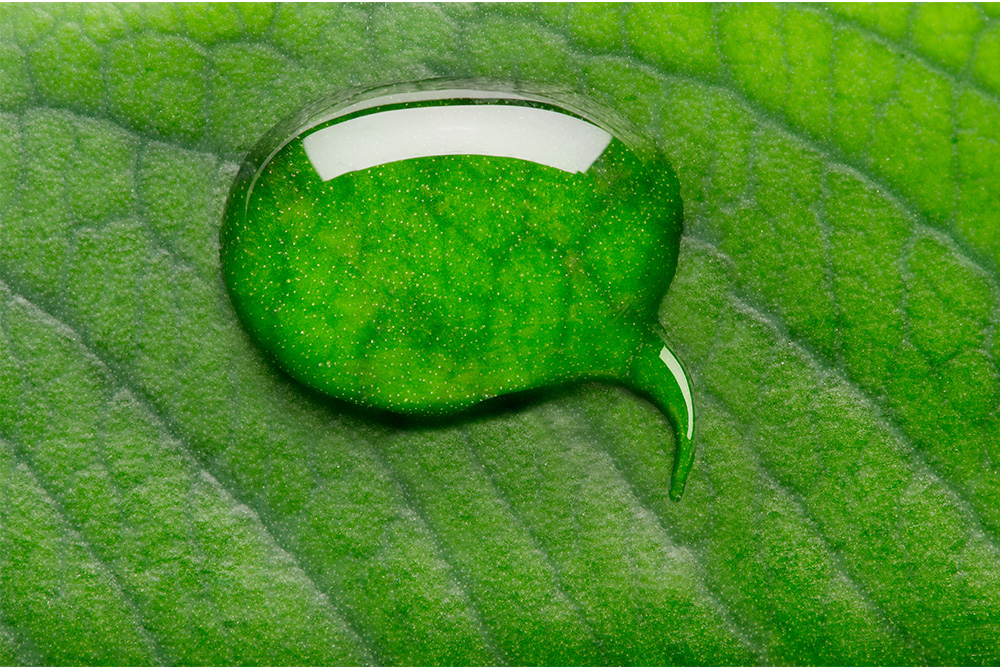
No time for small talk: Plant communications and yield.
They say if you want something in life, you have to ask for it. Scientists have learned this not only applies to people, but also to plants.
It turns out, plants are not the strong silent type after all. They are actually very active and effective communicators. This ability to ‘converse’ can not only help plants increase their chances of survival in the face of stresses, such as drought, disease and pests. It can also ensure the plants get what they need to thrive… and achieve high yield potential.
The universal language of chemistry.
Rather than words, plants communicate by releasing complex chemicals, known as volatile organic compounds (VOCs). There are four categories of VOCs: fatty acid derivatives, phenylpropanoids/ benzenoids, amino acid derivatives and terpenoids.
Plants can communicate among other plants within their same species. Dr. Clarence Swanton, a weed scientist with the Department of Agriculture at the University of Guelph, recently shared some interesting examples in a video talk. In one example, he says if it is being attacked, an Alder tree will send signals telling other alders to put up their defensive mechanisms.
Researchers at Israel’s Ben Gurion University, led by Ariel Novoplansky, have strong evidence indicating that garden peas can warn neighbours in times of stress. In an experiment simulating drought, not only did the affected plants start to close their stomata (pores) as a defensive mechanism – healthy neighbouring plants quickly followed suit. The researchers found these signals were being sent from plant to plant via the roots. They learned this by blocking off root contact as part of their controlled experiment.
Communication can even take place between plants of different species. Swanton says if a sage plant is being defoliated, its warning signals can be picked up and understood by nearby tobacco plants – giving them time to alter their own physiology in preparation.
It’s not just plants that are communicating.
Interestingly, plants can communicate with organisms from different biological kingdoms, including fungi and even animals.
Tomato plants that have been invaded by caterpillars have been found to release a chemical that attracts predators that feast on the caterpillar.
Likewise, when they are being preyed on by aphids, broad bean plants can emit VOCs that attract aphid-eating wasps. But how does it work?
In 2009, researchers at the University of Scotland found that mycorrhizal fungi played a big role in this communication process. It turns out that bean plants that have symbiotic relationships with mycorrhizae were far more successful in attracting the wasps. The researchers concluded the mycorrhizal networks were central to this interplant communication.
How does a plant say, “I’m hungry”?
Imagine if a plant could not only express its hunger but actually order a specific item from the menu of nutrients in the soil.
A new type of sustainable phosphorus fertilizer has been formulated not to dissolve in the soil solution. It is only when the plant releases root exudates (organic acids), communicating that it requires phosphorus, that this unique fertilizer converts to plant available phosphate in the root zone. Once the plant has satisfied its current need for P, it will reduce or stop the release of these organic acids. The fertilizer then ceases to release phosphate in response, remaining available (not at risk of tie-up in soil) and ready for the next release of root exudates. Providing season long feeding for the plant.
Scientists as interpreters.
Researchers have found that plant communication can occur through the air or the soil. There is even evidence that plants may send messages using sound.
As scientists gain a greater understanding of the complex chemical signals that plants use to communicate, they are hoping to develop new and more efficient agricultural strategies and solutions that give the crops an advantage. Gaining a better understanding of the link between plant communications and yield has the potential to dramatically change the conversations we’re currently having around plant health.
Sources/ Recommended watching/ reading:
Video talk: Dr. Clarence Swanton, U. Guelph

